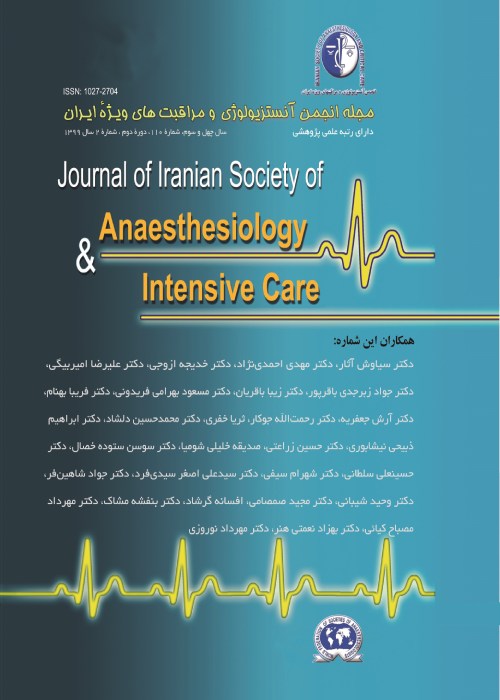The public awareness regarding anesthesia and the role of anesthesiologists in Iran: a survey
Author(s):
Article Type:
Research/Original Article (دارای رتبه معتبر)
Abstract:
Background
Anesthesiology was emerged as a medical specialty from the early 20th century. Anesthesiologists manage vital procedures during surgery and induce anesthesia and, at the end of surgery, awaken patients. The people can be educated and their health can be improved by bewaring of their attitude and understanding of anesthesiologists and anesthesiology. So, this study is aimed to evaluate the knowledge of the general population about anesthesiology, anesthetic procedures, and the tasks of anesthesiologist and the factors influencing it.
Materials and methods
This study is a descriptive-analytic cross-sectional study between 1396-97. The population of the study was healthy people in Tehran, Mazandaran, Khuzestan, Khorasan Razavi, Kerman provinces and Tehran city. The sampling method was defined in three levels: cluster sampling, stratified sampling, and simple random sampling. The data collection tool was a questionnaire. Data were analyzed using descriptive and analytical statistics and analyzed using SPSS v.19 software.
Results
1558 questionnaires were completed. 52.4% of the subjects were females and 47.6% were males. The mean age of the subjects was 43.62 ± 14.8 years. The majority of subjects were married (54.7%), had high school education (33.4%) and were employed (63.3%). The result of this study showed that 44.2% of people were afraid of anesthesia. There was a significant relationship between gender and fear of anesthesia and between age and fear of anesthesia and between education and fear of anesthesia. Only 30.6% of the people knew that they are anesthetized by anesthesiologists. The majority of people (76.4%) had a tendency to be visited by their anesthesiologist preoperatively. 37.9% of people tended to have general anesthesia and women preferred general anesthesia more than men. The majority of subjects (53.4%) believed that general anesthesia was less risky than spinal anesthesia and had no knowledge of the duration of education of anesthesiologist at the university. Only 30.4% of the subjects have knowledge about the anesthesiologist role in controlling acute and chronic pain, 16.1% of them have knowledge about the anesthesiologist role in emergency unit and 37.4% of them have knowledge about the anesthesiologist role in intensive care unit.
Conclusion
Despite the fact that the majority of people participating in our study were educated and lived in urban areas, public awareness of the role of anesthesiologists in Iran was poor. This knowledge is improved by more relationship between anesthesiologists and community and increasing media attention to anesthesia and anesthesiologists and the provision of radio and television programs about the role of anesthesiologists and will help to improve awareness and understanding of community members regarding anesthesia and the role of anesthesiologists.Keywords:
Language:
Persian
Published:
Iranian Journal Of Anaesthesiology and Critical Care, Volume:40 Issue: 3, 2018
Pages:
2 to 15
magiran.com/p1957884
دانلود و مطالعه متن این مقاله با یکی از روشهای زیر امکان پذیر است:
اشتراک شخصی
با عضویت و پرداخت آنلاین حق اشتراک یکساله به مبلغ 1,390,000ريال میتوانید 70 عنوان مطلب دانلود کنید!
اشتراک سازمانی
به کتابخانه دانشگاه یا محل کار خود پیشنهاد کنید تا اشتراک سازمانی این پایگاه را برای دسترسی نامحدود همه کاربران به متن مطالب تهیه نمایند!
توجه!
- حق عضویت دریافتی صرف حمایت از نشریات عضو و نگهداری، تکمیل و توسعه مگیران میشود.
- پرداخت حق اشتراک و دانلود مقالات اجازه بازنشر آن در سایر رسانههای چاپی و دیجیتال را به کاربر نمیدهد.
In order to view content subscription is required
Personal subscription
Subscribe magiran.com for 70 € euros via PayPal and download 70 articles during a year.
Organization subscription
Please contact us to subscribe your university or library for unlimited access!


